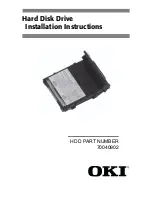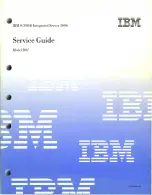
Chapter 1: DXi4500 System Description
Supported RAID Configurations
10
Quantum DXi4500 User’s Guide
Supported RAID Configurations
RAID is short for Redundant Array of Independent (or Inexpensive) Disks,
which is a category of storage that employs two or more drives in
combination for fault tolerance and performance. There are a number
of RAID levels in use today such as 0, 1, 3, 5, 6 and 10.
The DXi4500 uses the following RAID level:
•
RAID 6 Configuration
RAID 6 uses block-level striping with two parity blocks distributed across
all member disks. Dual parity provided by a RAID 6 configuration
ensures that your data retains full integrity even in the event of two
hard drive failures. Since single parity RAID levels are vulnerable to data
loss until the failed drive is rebuilt: the larger the hard drive, the longer
the rebuild will take and the longer the system is vulnerable to possible
data loss.
The DXi4500 uses RAID 6 volumes for data storage.
• The system contains the following RAID 6 set (
•
DATA
- HDD slots 1–8 (data storage)
Figure 5 DXi4500 RAID Sets
HDD Slot 0
HDD Slot 2
HDD Slot 4
HDD Slot 6
HDD Slot 1
HDD Slot 3
HDD Slot 5
HDD Slot 7
Summary of Contents for DXi4500
Page 18: ...Preface xviii Quantum DXi4500 User s Guide...
Page 22: ...Preface xxii Quantum DXi4500 User s Guide...
Page 34: ...Chapter 1 DXi4500 System Description DXi Advanced Reporting 12 Quantum DXi4500 User s Guide...
Page 56: ...Chapter 3 DXi4500 Concepts Network Segmentation 34 Quantum DXi4500 User s Guide...
Page 146: ...Chapter 6 DXi4500 Status System 124 Quantum DXi4500 User s Guide...
Page 218: ...Appendix A DXi4500 System Specifications 196 Quantum DXi6500 User s Guide...
















































